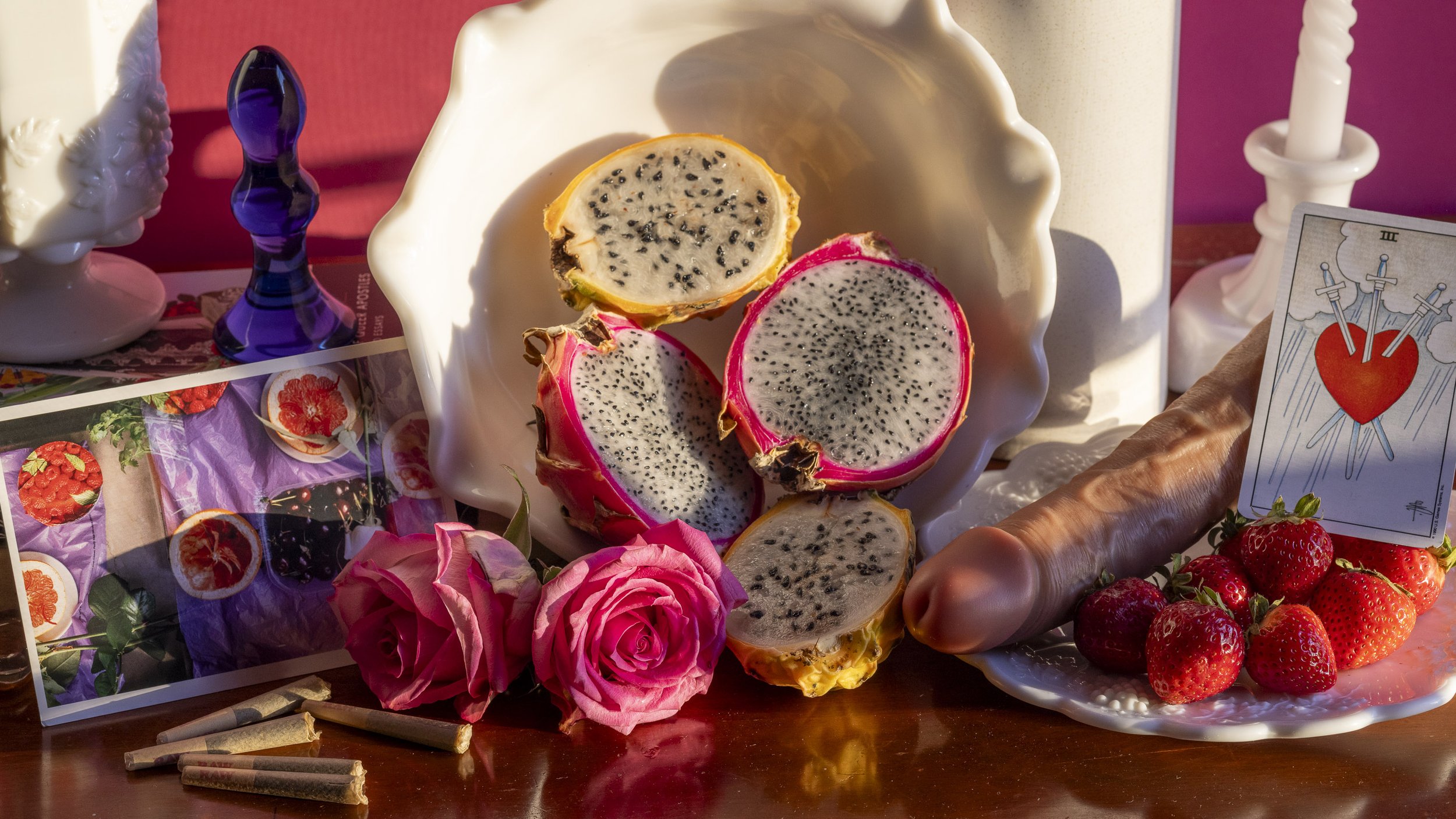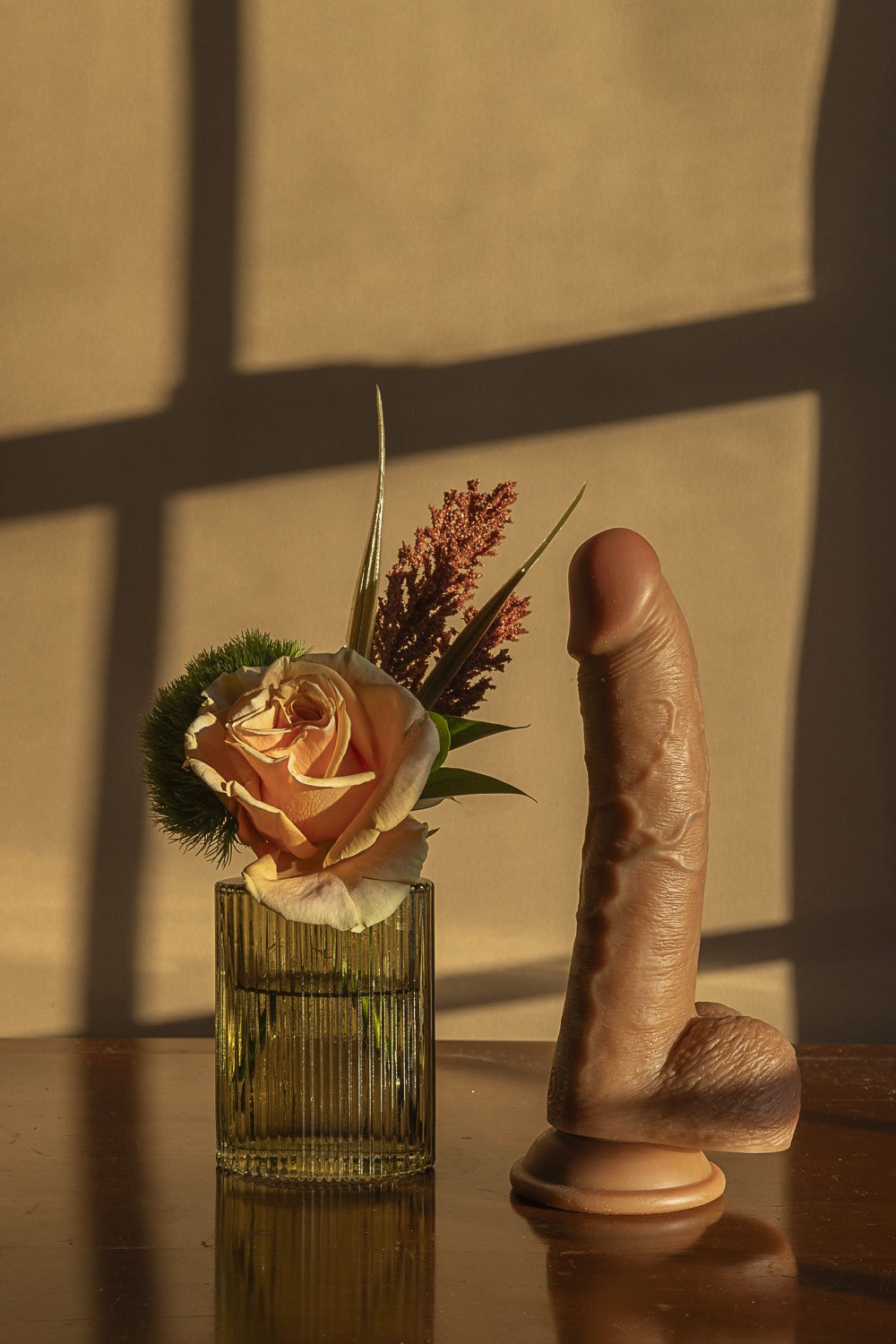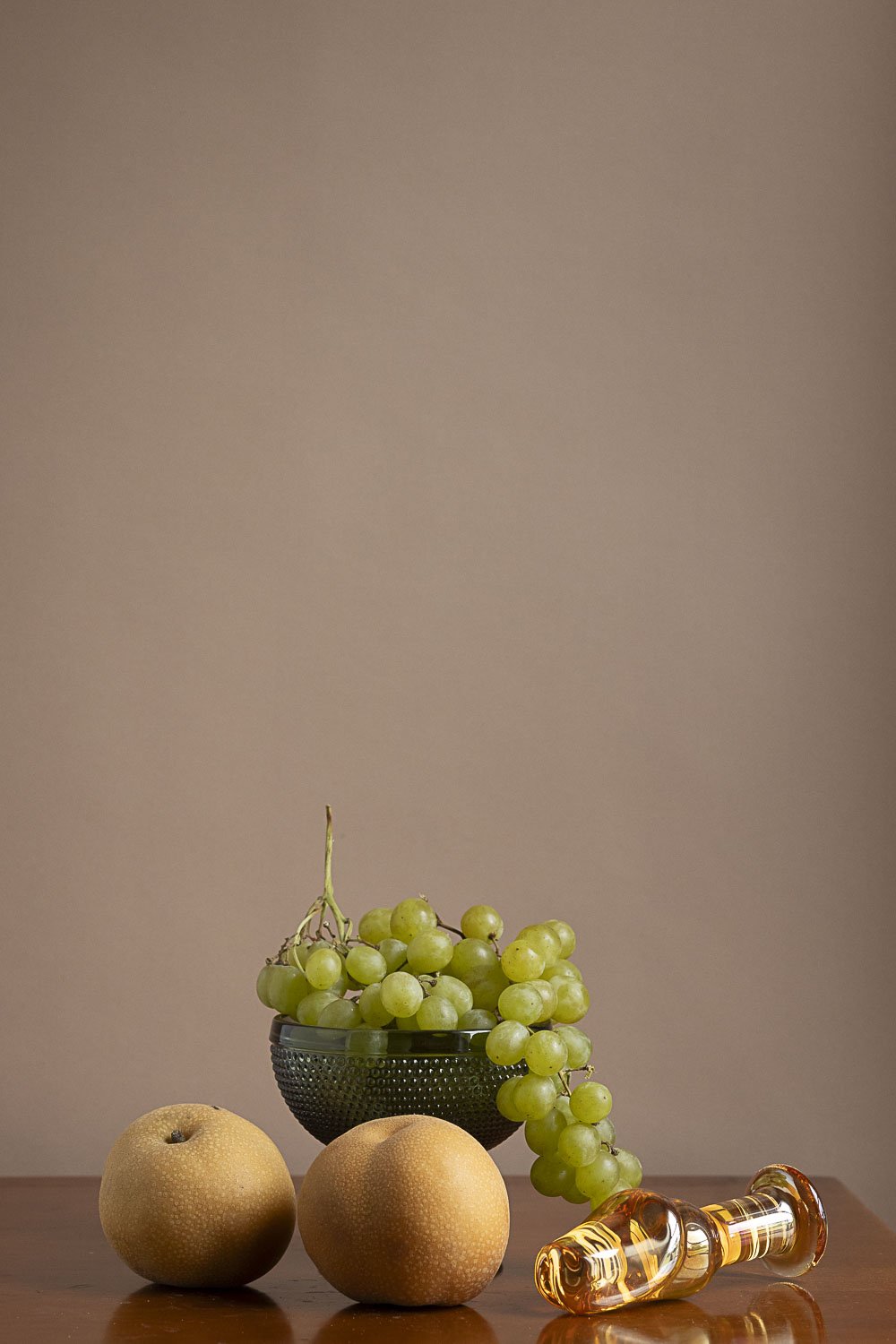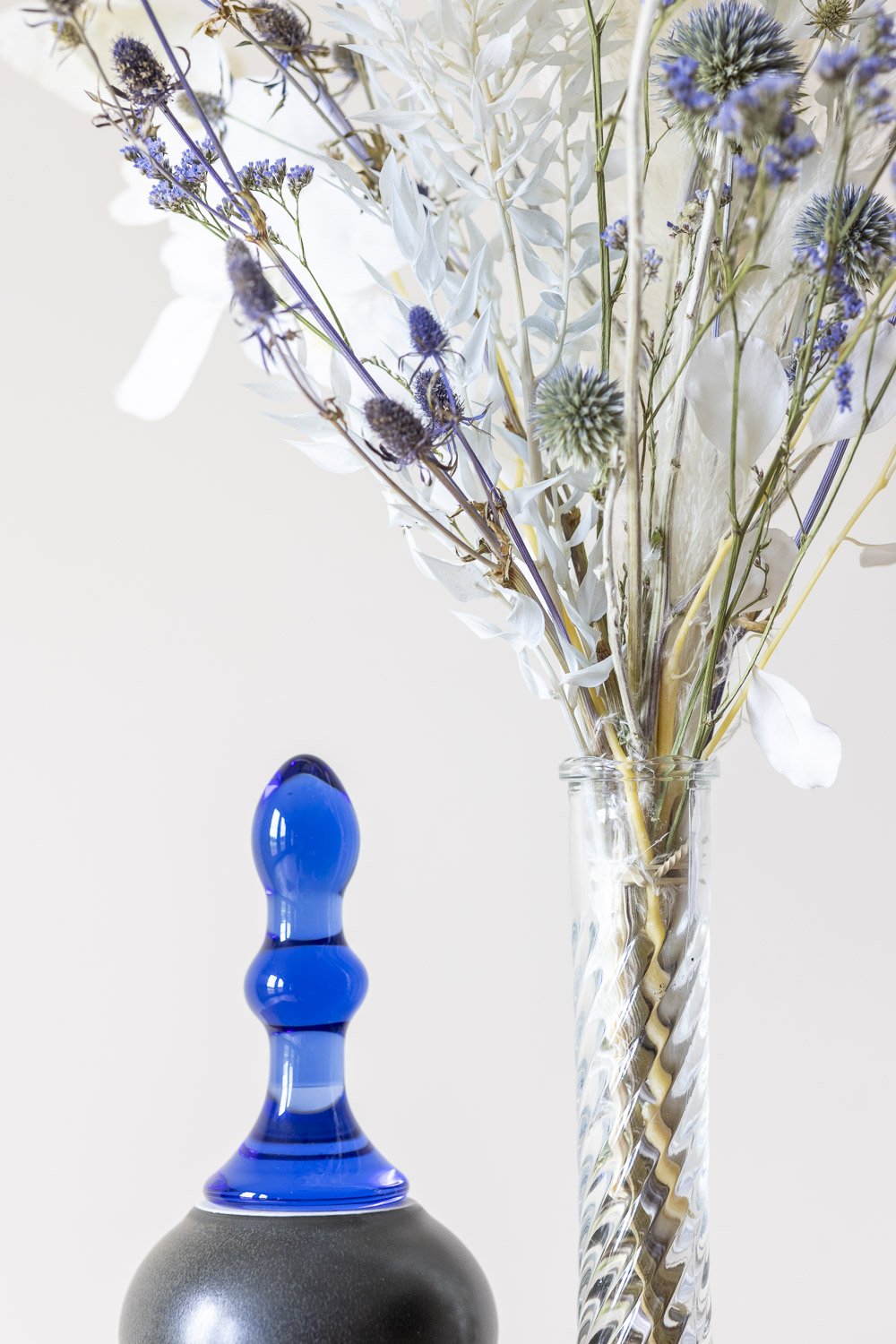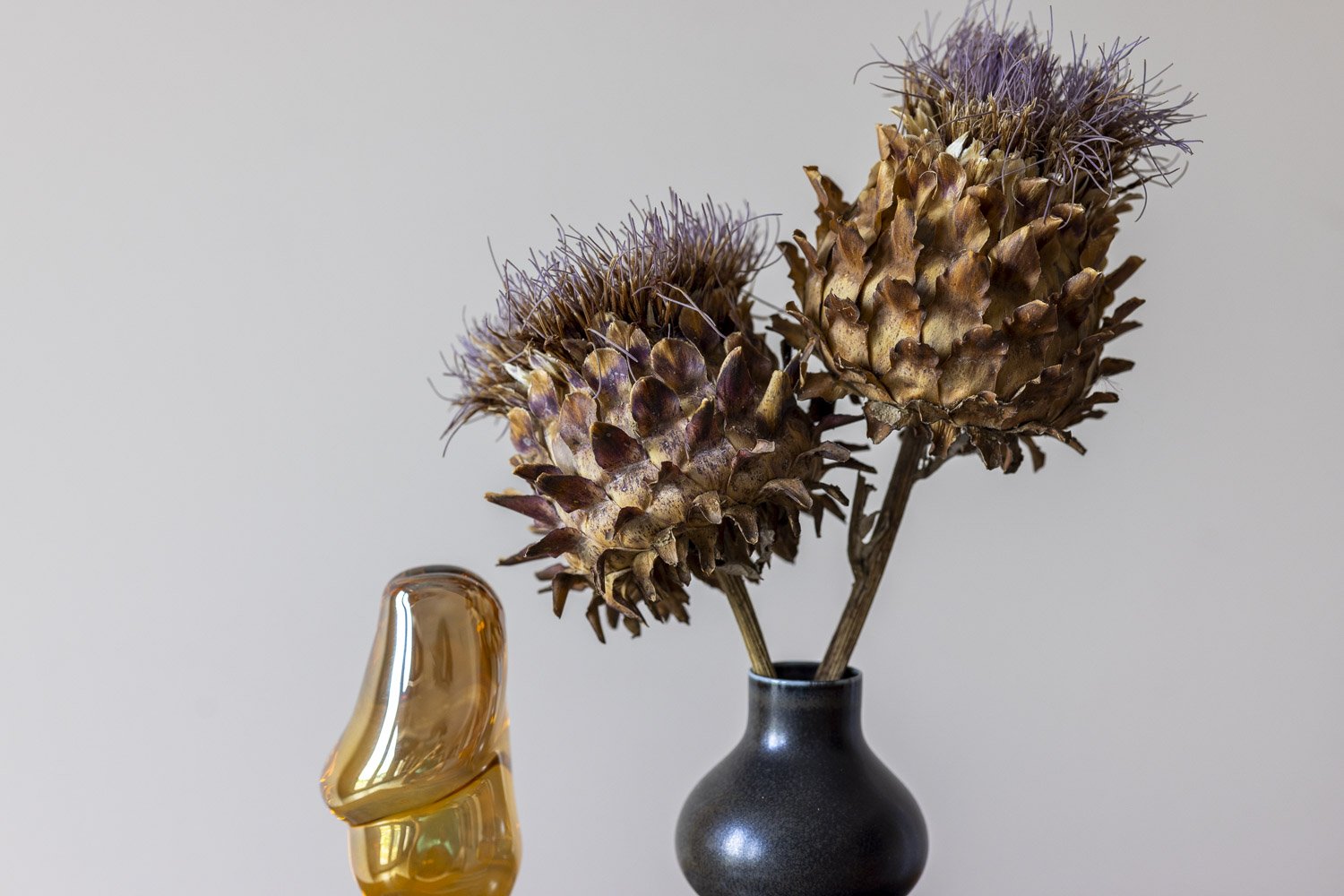Michael Kopp
PHALLIC IN WONDERLAND
STILL LIFE STUDIES
Phallic in Wonderland interrogates the intersections of body, identity, and empire through the symbolic language of contemporary still life. In this work, the body is neither depicted nor absent—it is evoked through its fragmentation, abstraction, and displacement. The series engages with the politics of disembodiment, exploring how identity is constructed, mediated, and imposed through objects and images rather than through physical presence. The body, under the weight of imperial legacy, functions as both subject and substrate. It is the site upon which systems of control—colonial, patriarchal, capitalist—are inscribed. It is, as Francisco Guevara describes, “[Body] is a system of delivery; a communicating event…it is at once the final point of resistance to the global imperatives of Empire and the first to be affected by it.” In this way, the body becomes a battleground of meaning, contested not only through its visibility but through its representation in and through material culture.
Drawing upon the visual vocabulary of Dutch Golden Age Pronkstilleven painting, Phallic in Wonderland juxtaposes ornate luxury objects—milk glass, marble, vases, and floral arrangements—with contemporary commodities such as imported fruits, vegetables, and phallic forms rendered in silicone, glass, and plastic. These carefully staged compositions replicate the excess and performativity of the Pronkstilleven, but displace its original function: rather than naturalizing the authority of mercantile empire, these photographs destabilize the narratives embedded in commodity aesthetics. Notably, the series excludes the human form. In its place, symbolic surrogates operate as signifiers of gender, sexuality, and consumption. The absence of the physical body heightens the dissonance between object and subject, emphasizing the processes by which identity is ascribed to things and spaces. This disembodiment calls attention to the ways in which the body is mediated—through commerce, through media, through histories of imperial gaze—and how it is rendered legible within systems of representation.
The logic of the image in Phallic in Wonderland draws from early 20th-century cinematic theory, particularly the work of Russian filmmaker Lev Kuleshov. In his theory of “constructed meaning,” Kuleshov demonstrated how the juxtaposition of two images could generate an entirely new, synthesized meaning in the mind of the viewer. This principle—1 + 2 = 12—underpins the conceptual structure of the series. Objects are not merely presented but positioned in relation to one another to provoke interpretive projection. In this way, the photographs function not only as aesthetic arrangements but as cognitive experiments in meaning-making. Through symbolic layering and visual provocation, Phallic in Wonderland asks how identities—especially those marked by gender and sexual politics—are coded into images and products, and how these codes trace broader imperial and capitalist systems. The result is a still life practice that reclaims the genre’s critical potential: not simply to depict, but to destabilize.








